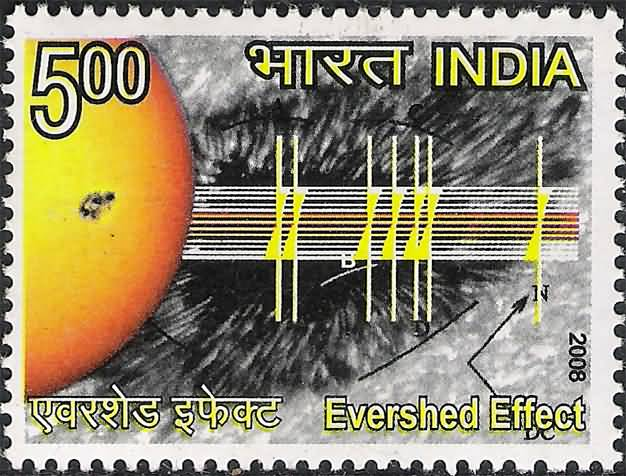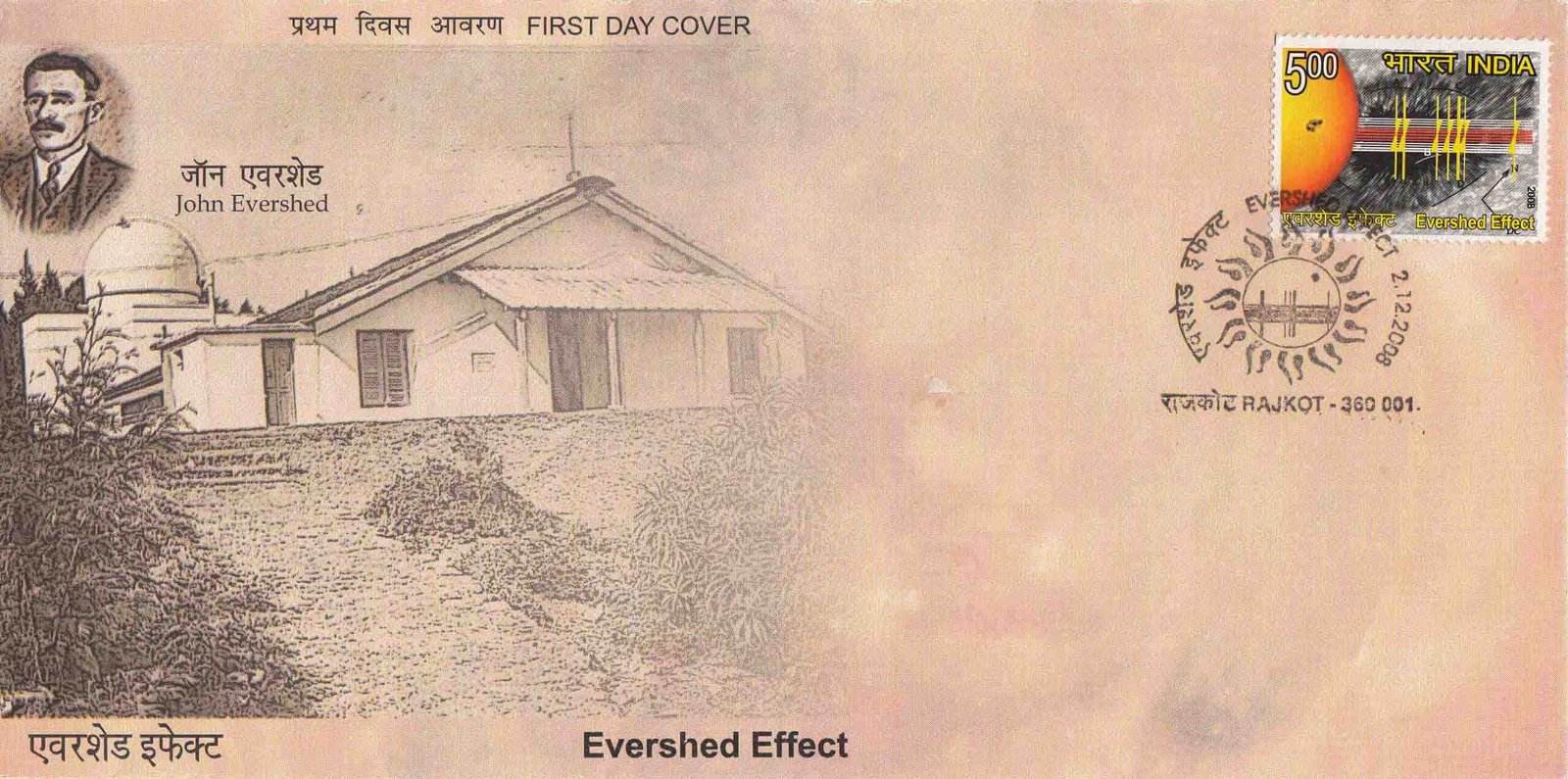Evershed Effect

Technical Data
| Stamp Set | Centenary of Discovery of the Evershed Effect |
|---|---|
| Date of Issue | December 2, 2008 |
| Denomination | Rs. 5 |
| Quantity | 400,000 |
| Perforation | 14 x 13½ |
| Printer | Security Printing Press, Hyderabad |
| Printing Process | Wet Offset |
| Watermark | No Watermark |
| Colors | Multicolor |
| Credit (Designed By) | Mr. Suresh Kumar |
| Catalog Codes |
Michel IN 2320 Stamp Number IN 2288 Stanley Gibbons IN 2542 WADP Numbering System - WNS IN061.2008 |
| Themes | Anniversaries and Jubilees | Discoveries | Science | Sun |
Solar eclipse of 1868 and 1871 played a fundamentally significant role in the development of astrophysics in India. The idea to establish a modern observatory at a hill station took roots. Physics Observatory at Kodaikanal, was the outcome of such an idea and was founded in 1899, which started functioning in 1899. John Evershed, one of the foremost solar astronomers of his time, spent his most fruitful research years at the Solar Physics Observatory in Kodaikanal, first as its Assistant Director (1907-1911) and then as the Director (1911-1923). He had distinguished himself as a prolific amateur solar observer, working in his own private observatory in Kenley, England, recording no less than 13, 458 prominences between the years 1890 and 1905, and noting the changes in heliographic latitude during a solar cycle. The Kodaikanal appointment was his first as a professional astronomer. When John Evershed arrived in 1906, Kodaikanal already had some good solar instruments including a Cambridge Spectroheliograph. With his expertise and experience as an instrument builder, Evershed was able to improve upon these instruments and look at the Sun with great clarity. He started working on the spectrum of sunspots soon after.
In the early morning of January, 5 1909, on a day when the atmosphere was exceptionally steady and sky transparency was excellent, Evershed obtained Sunspot spectra which showed for the first time line displacements in the penumbral region indicating an outward radial flow of gases in the spots. Two days later, Evershed obtained more spectra which confirmed the discovery. The discovery has since been named after him and is known today as the Evershed Effect.
Earlier studies focused on sunspots near the central meridian of the Sun. Evershed, however, was the first to observe sunspots at various positions, up to 50 degrees on either side of the central meridian. He discovered that line displacements were more pronounced in the penumbral regions of the spots closer to the limb of the Sun. This observation clearly indicated that the flow of the gases was radially outward parallel to the surface of the Sun. Evershed’s discovery is the forerunner of many important discoveries which connect the velocities and magnetic fields on the surface of the Sun, which has given rise to the entire field of solar magneto hydrodynamics. Evershed’s work established the reputation of Kodaikanal as one of the best established the reputation of Kodaikanal as one of the best solar observatories in the world. In 1913, Evershed visited Kashmir for three months and found the observing conditions in the Kashmir Valley excellent for solar work. He established a temporary observatory near Srinagar in 1915-16 obtaining very high-quality photographs of prominences and sunspots.
During the hundred years since Evershed’s discovery, our understanding of the solar phenomena and the solar-terrestrial relations has grown enormously. It has profoundly influenced diverse fields of science and great benefits have been derived from these studies. Solar space missions have further enriched our knowledge of the complex processes taking place on the solar surface and their impact on the interplanetary space and our terrestrial environment.
First Day Cover

